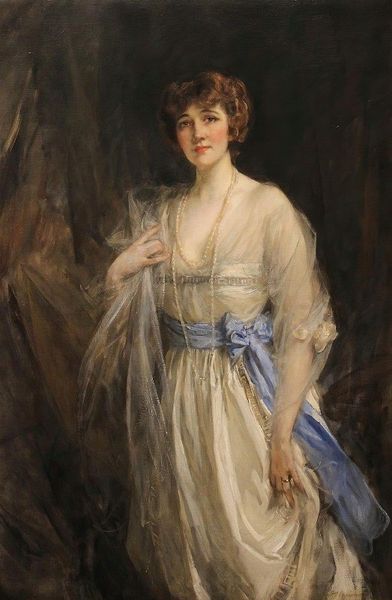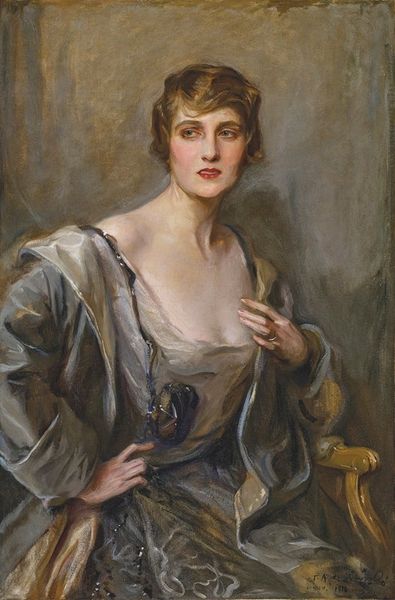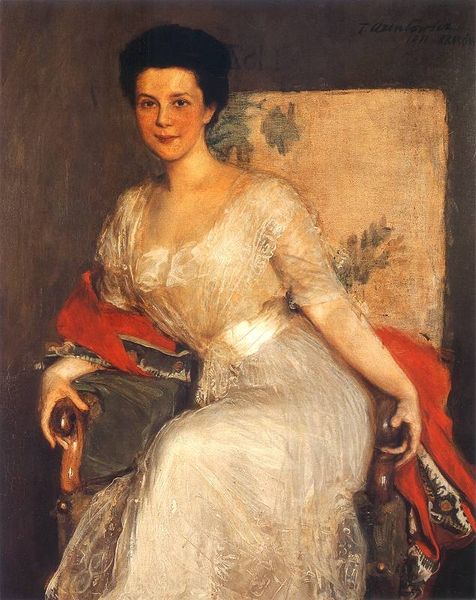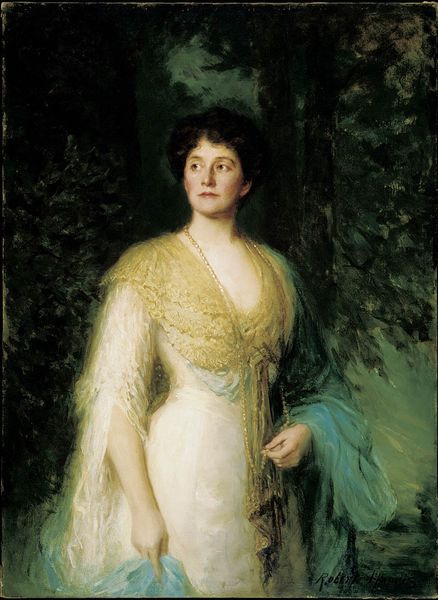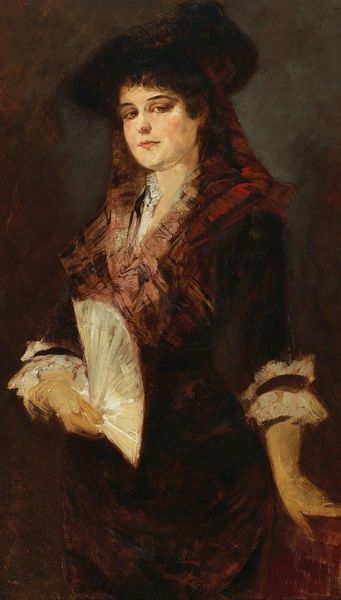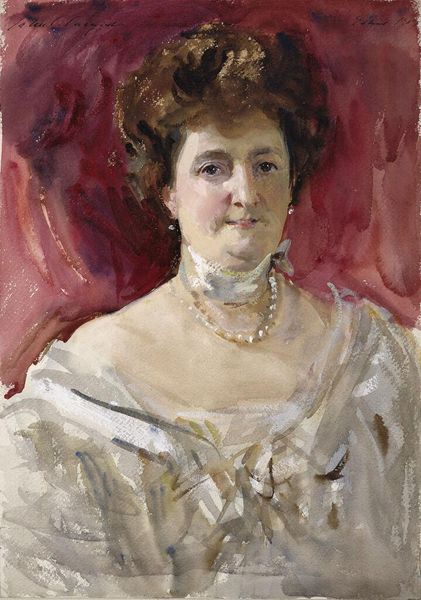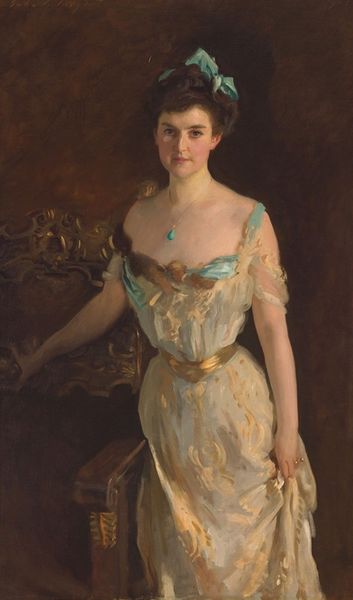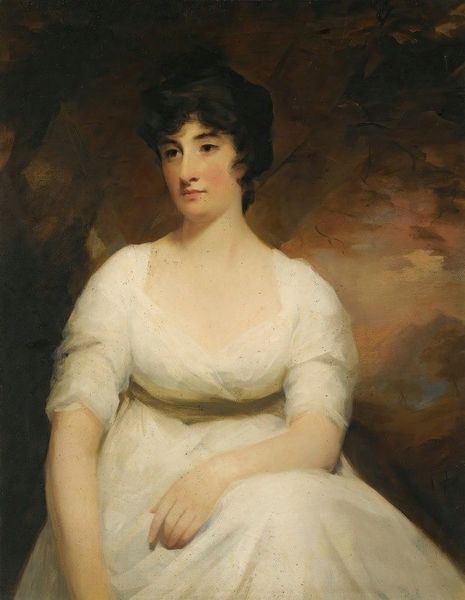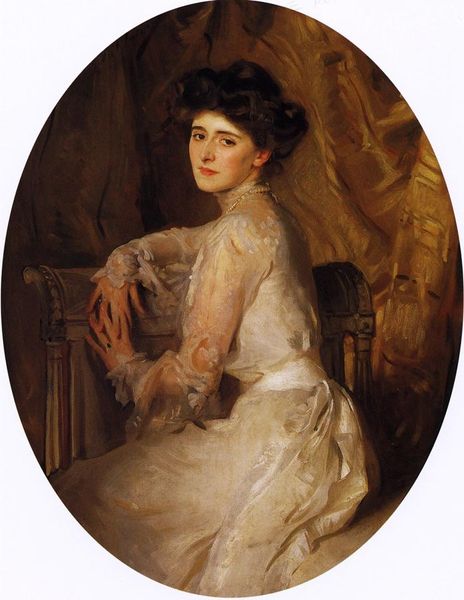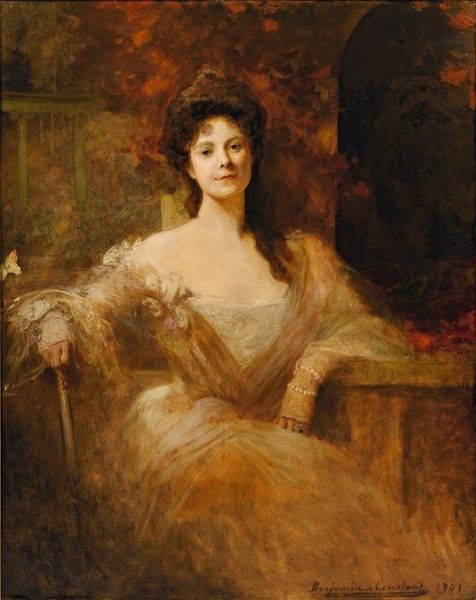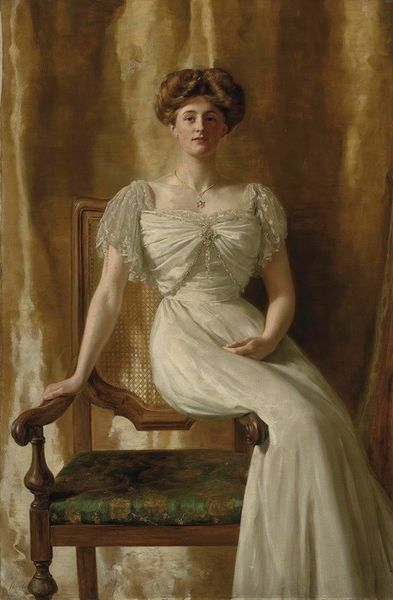
painting, oil-paint
#
portrait
#
figurative
#
painting
#
oil-paint
#
figuration
#
romanticism
#
genre-painting
#
academic-art
Copyright: Public Domain: Artvee
James Jebusa Shannon painted "Mrs George Harland-Peck" with oil on canvas, during a time when portraiture served significant social functions in Britain. This work operates within a complex system of visual codes signifying wealth, status, and respectability. The elegant white dress, pearl necklace, and delicate hands all speak to the sitter's privileged position in society. Notice the carefully arranged drapery and the confident pose of the sitter, which were conventions in aristocratic portraiture. Shannon was a society portraitist, and his art reflects the values and expectations of the British upper class. The portrait subtly reinforces prevailing social hierarchies, presenting an image of refined femininity and domesticity. The Royal Society of Portrait Painters, founded in 1891, played a role in establishing the formal criteria and aesthetic values of this kind of portraiture. As art historians, we can look at sources, such as fashion magazines or social registers, to understand the cultural context in which this portrait was created and consumed. The study of art provides insights into the intricate relationship between representation, power, and social identity.
Comments
No comments
Be the first to comment and join the conversation on the ultimate creative platform.

